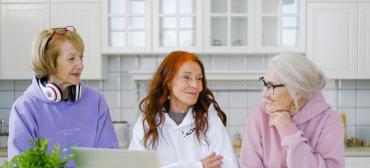Stroke in Children
A stroke is a brain injury caused by the interruption of blood flowing to part of the brain. Stroke can be caused by a blocked blood vessel in the brain or by a bleeding blood vessel in the brain. The brain needs a constant supply of oxygen, which is carried by the blood. When blood flow stops, brain cells start to die.
Stroke is much more common in adults than children, but children get strokes, too. The biggest problem with stroke in children is that doctors and parents don't expect to see a stroke in a child, so the diagnosis is often delayed. The good news is that a child has a better ability to recover from stoke than an adult because a child's brain is still developing.
Facts about stroke in children
Stroke in children has different causes than in adults. Adult stroke may be caused by high blood pressure, smoking, or high cholesterol. The most common cause of stroke in a child is a heart problem. Other causes for children include sickle cell disease (a type of blood disease passed down through families), infection, trauma, dehydration, blood clotting problems, and birth defects. In many cases, however, no cause can be found.
Other facts about strokes in children include:
-
For children younger than 15, about six cases of stroke occur each year for every 100,000 children.
-
Stroke is among the 10 most common causes of death in children.
-
Most children recover the use of their arms, legs, and speech with stroke treatment.
Types of stroke in children
Two types of stroke can occur:
-
Hemorrhagic stroke. This type of stroke occurs when a blood vessel in the brain breaks and bleeds into the brain.
-
Ischemic stroke. This type of stroke occurs when the flow of blood inside a blood vessel that supplies the brain is blocked. The most common cause is a clot that forms in the heart and travels to the brain.
Symptoms
Symptoms of stroke in children depend on the age of the child and the cause of the stroke. In newborns, the most common symptom is a seizure. Other symptoms in newborns may not occur for several months. In older children, stroke symptoms are more like the symptoms seen in adults and may include:
-
Severe headache, possibly with vomiting
-
Weakness on one side of the body
-
Numbness on one side of the body
-
Dizziness and trouble walking
-
Visual problems
-
Speech problems
-
Decreased alertness or sleepiness
Diagnosis
Any symptoms of stroke in children require an immediate trip to the emergency room. Diagnosis begins with a history and physical exam. During the history, the medical team may ask about any history of trauma, infection, delayed development, and about family history of bleeding problems. The physical exam will look for any signs of weakness, numbness, and other signs of stroke. Several tests may be done to help make the diagnosis:
-
Brain imaging studies. Special tests that make pictures of the brain called MRI, MRA, or CT scan are done to look for evidence of stroke in the brain.
-
Blood tests. Blood is taken to look for signs of infection and blood clotting abnormalities.
-
Heart studies and blood vessel studies. Heart rhythm is checked with an EKG and special pictures of the heart and blood vessels may be taken to look for abnormalities.
-
Lumbar puncture. Fluid is taken from the spinal cord area to look for signs of bleeding in the brain.
Treatment
It is important to call emergency at the first sign of stroke in children. Treatment works best if it is started within three hours after a stroke occurs. The type of treatment used will depend on the cause of the stroke. Treatment may include:
-
Giving fluids to avoid or reverse dehydration
-
Giving oxygen
-
Blood transfusions
-
Treatment of heart conditions
-
Giving medication to treat abnormal blood clotting
-
Giving blood thinning medications
Prevention
In children, the first symptom of a stroke is usually the first warning, so there may be no way to prevent the first stroke. But 20 percent of children will have more than one stroke, so prevention of a second stroke is important. The best way to prevent a second stroke is to identify risk factors and correct them. The most common risk factors are:
-
Heart and blood vessel abnormalities
-
Sickle cell disease
-
Blood clotting abnormalities
Managing stroke in children
After the initial treatment of a stroke in a child there may be a long period of rehabilitation. The most common problem that needs to be managed is the loss of some movement on one side of the body. Other issues may include recurring seizures and learning, speech, visual, and behavior problems. Managing these problems may call for:
-
Medications
-
Physical therapy
-
Occupational therapy
-
Speech therapy
-
Educational testing and help in school
Most children do recover after a stroke. The most important thing is to get treatment right away. Know the symptoms and call your local emergency number for help.





















